
views
Locating the Battery Cables

Put on safety glasses and gloves. It’s important to wear the appropriate protective equipment any time you work on a car or truck. Car batteries contain a mixture of sulphuric acid and water that could cause serious harm if it gets into your eyes. Batteries can rupture if hooked up incorrectly, which could result in the water/acid mixture from the battery getting into your eyes. Wearing latex gloves can make it much easier to clean up after you’re done working on the car, but may not be necessary for this job.
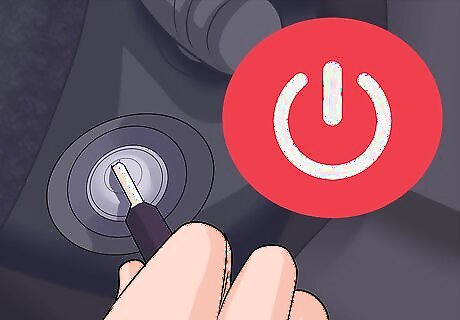
Ensure the car is turned off. It’s important that you make sure the car is in park and turned off before beginning the process of replacing your battery cables. You will be working with the car’s electrical system, so leaving it running could increase the likelihood of you receiving an electrical shock and could possibly do damage to the vehicle. Remove the keys from the ignition to make sure no one can accidentally try to start it while you’re working under the hood. If your car is a standard, make sure the parking brake is engaged instead of having the car in park.
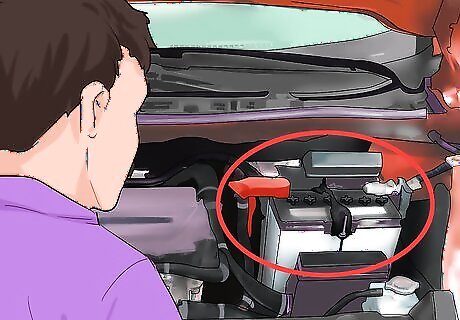
Locate the battery. Different automakers place the batteries in their cars in different locations for a number of reasons. Most car batteries can be located near the front or nose of the car on the left or right. It looks like a large, usually black box with two metal terminals sticking out of the top, each with cables attached. Make sure the hood struts can support the weight of the hood before you release it, otherwise it could fall and hurt you. If you cannot locate the battery under the hood of the car, it may be in the trunk. Some automakers place the battery in the trunk to improve weight distribution or save space. If you cannot locate your battery, refer to your owner’s manual. It will show you how to locate and access your battery.
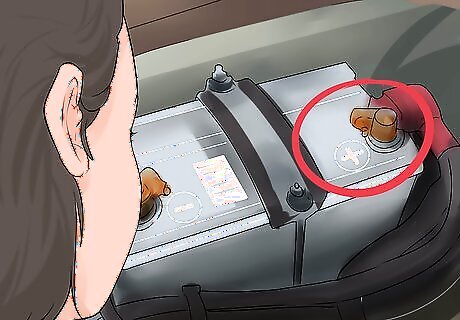
Determine which is the positive and which is the negative terminal. Once you have located the battery, you will need to differentiate between the positive and negative terminals. Car battery cables are usually colored to match their use: red cables are positive, black cables are negative. In some cases, the wires may both be black, but they will have red and black boxes or accents at the ends of the cable. If there are no discernible colors visible, you can easily determine which is the negative cable by following them from the battery to the other end. Negative cables bolt directly to the body of the car or engine block, positive cables attach to the starter. The battery will have labels marked with a + and a – sign. The plus is the positive cable terminal, the – is the negative.
Removing Old Battery Cables
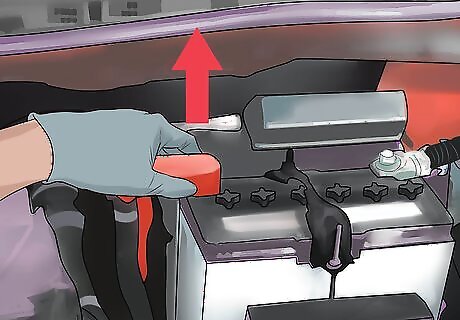
Remove boxes or tape covering the end of the cable. You will often find other wires attached to a battery cable using electric tape (particularly on the positive side). Sometimes these wires are held in place more securely using metal or plastic retainers. Do not remove these wires, but cut off any tape that prevents you from reaching the bolt that keeps the cable secured to the terminal. If the end of the cable is housed in a plastic box indicating if it is positive or negative, you can open the box by squeezing the two clips on either side of it. Be careful not to cut any wires when trying to access the bolts.
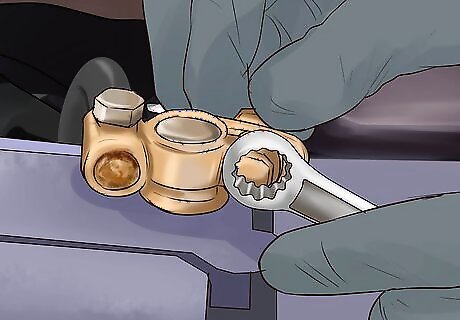
Disconnect the negative cable. The negative cable, which is also called the ground cable, should be the first you disconnect. Once you disconnect this cable, the car will no longer have a completed electrical circuit, and you may notice any dashboard, interior or engine bay lights that were on will instantly shut off. This indicates that the battery is no longer connected to the car in a manner that can power it. You will need to loosen the bolt that holds the cable in place, but you will not need to remove it. If the bolt is seized or will not turn, try spraying some WD-40 on it. It will eat away some of the rust and oxidization and allow the bolt to turn more freely. Do not allow the negative cable to come into contact with the positive terminal at any time.
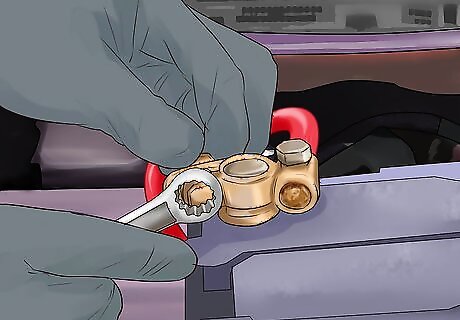
Disconnect the positive cable. Because the negative cable is the one most often disconnected while working under the hood of a car, the positive one may by slightly more difficult to remove. Once the positive cable is disconnected from the battery, the battery will be completely disconnected and may be removed. Set the end of the cable aside so that it can’t fall back into place and make contact with either battery terminal. If your battery is in the trunk, the positive cable will attach to another connector near the body of the car. Simply disconnect it from there.
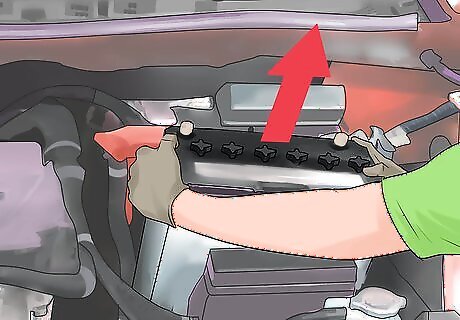
Remove the battery. Some cars will not require the removal of the battery while replacing battery cables, but even if it is not necessary, it may make the process easier. Removing the battery can free up room to work and removes any possibility of the cables coming back into contact with their terminals and shocking you. Many cars have a bracket that holds the battery in place. Removing this bracket usually requires unscrewing two bolts. Make sure to set the battery upright after removing it from the car.
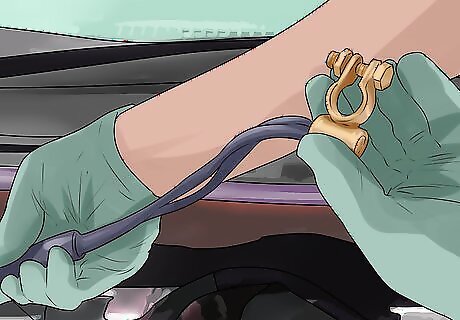
Remove the negative cable, then the positive. Start by following the negative cable from the now loose end back to where it is bolted to the engine block or body of the car. Take note of how it is routed so you can follow the same path with the new cable. Once you locate the other end, use a wrench to remove the bolt that holds the negative cable in place. Then repeat the process for the positive cable, which will be attached to the starter on the other end. Be sure the car is not hot while doing this or you may burn yourself. It’s important you remember the way the cables are routed through the engine bay to ensure they don’t interfere with any moving parts when you replace them.
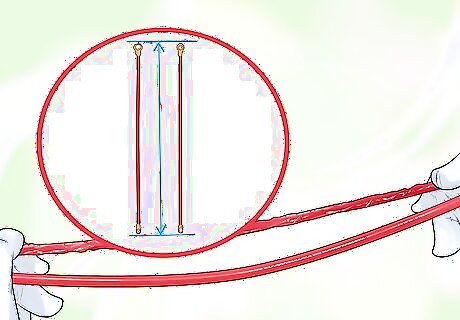
Compare the new and old cables. With both the positive and negative cables removed, compare them to your replacement cables. If you purchased cables specific to your car, they should match in length and have the same terminal connectors at each end. If they don’t you will need to return them for the proper cables. If you are using universal cables that you cut to length, use the old cables as your guide. If the new cables are slightly longer than the old, that likely won’t be an issue, but shorter cables will not work. Make sure the connecting ends at either side of the new cables match the old ones for easy installation.
Installing New Battery Cables
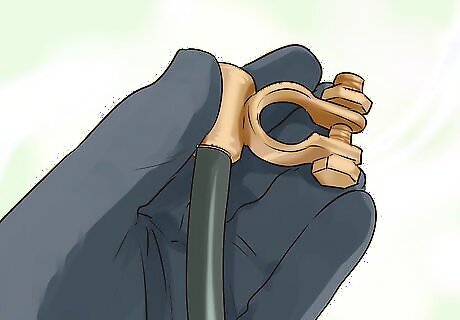
Prepare the new cables for installation. If there were plastic protective boxes on the old cable’s ends, remove them from the old cables and place them on the new ones. You will also need to ensure that there is no paint or dirt stuck on the new cable ends before you install them. The connections on either end of the cable should be bare metal to allow electricity to pass through them. You can use a steel-toothed brush to clean off the connector ends of the cables in order to ensure a good electrical connection.
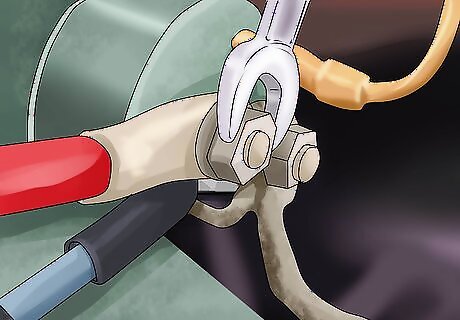
Attach the positive cable to the starter. Use the same bolt you removed to disconnect the old cable to attach the new one in its place. If the bolt is rusted, you may want to use a steel wire brush to remove the rust from the bolt and ensure a proper connection. If it is too rusted, you may need to replace it. Make sure the bolt is good and tight so it can’t vibrate loose as the car runs. Run the new positive cable back through the engine bay in the same way the old one was.
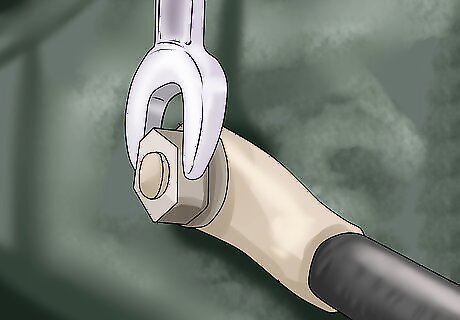
Attach the negative cable to the body or block. Locate the hole the old negative cable was attached to and use the same bolt to connect the new cable. Once again, ensure the bolt is in good enough condition to hold the cable in place and allow electricity to pass through the cable. Run the new negative cable back through the engine bay in the same route the old one took. Use a flashlight to ensure neither cable is coming into contact with any belts. Belts spin at high speeds under the engine bay and can damage battery cables.
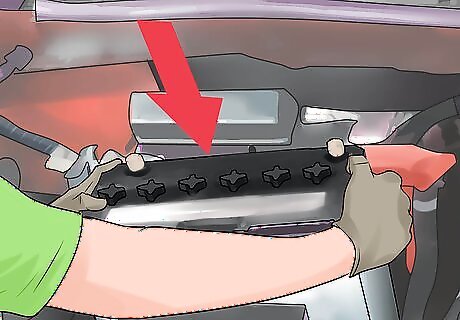
Place the battery back in the car. With both new cables in place, it’s time to place the battery back into the car. Make sure not to let the new cables come into contact with the battery terminals as you return it, as that could result in you receiving a shock. If the terminals on the battery appear to be oxidized or rusted, use a steel tooth brush to clean off the connection area before you place the battery back into the car. Bolt the bracket that holds the battery back into place to secure the battery. Be sure you placed the battery back in the same way it was before you took it out, so the positive terminal is closer to the positive cable, and the negative terminal is closer to the negative cable.
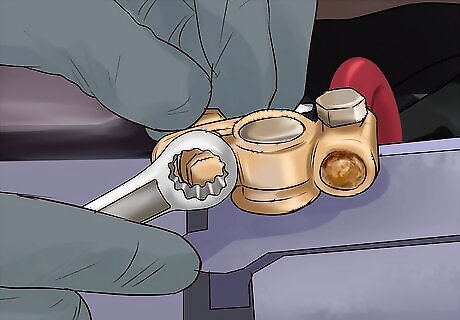
Connect the positive battery cable to the battery. You may want to purchase a corrosion inhibitor that you can put on the battery terminal prior to connecting the new cable. This can help ensure the connection from the battery is strong and doesn’t become limited as corrosion builds up in your engine bay. Squeeze the inhibitor onto the terminal, then slide the new positive cable connection over it. Tighten the cable by turning the bolt you loosened to remove the old one. Make sure the cable is connected firmly. It if jostles loose while you are driving the car will turn off.
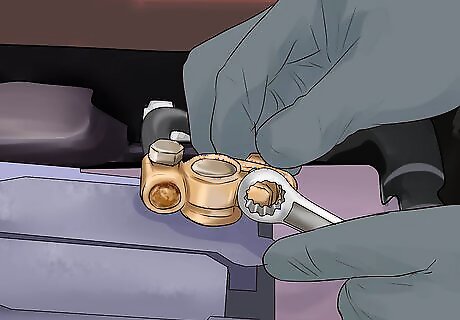
Connect the negative cable. Remember that connecting the negative battery cable will complete the car’s circuit and reestablish power to the vehicle. Be sure all other connections are tight before completing this step. You may also want to use the corrosion inhibitor on the negative terminal. Once the negative cable is connected, the car can be started again. Be careful when touching the negative cable to the terminal and it may produce some sparks. Tighten the cable down securely so you can be sure it won’t jiggle loose.
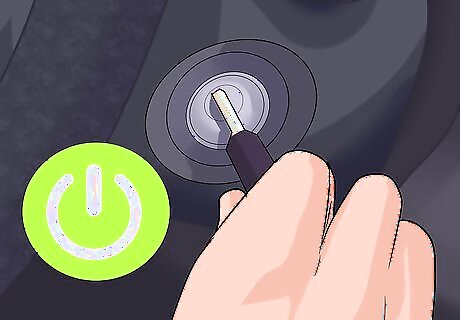
Start the car. Make sure you attached the cable properly by starting the car. If the car fails to turn over, one of the cables may not be properly fastened and the electricity is not reaching the starter. If the car attempts to turn over but can’t quite start, your battery may not have enough charge. If the car fails to start, recheck where the cables are connected on both ends. If the cables are installed properly and secured, remove the battery again and take it to your local auto parts store. They can test and charge the battery to ensure it’s still good. If the cables were loose at all, tighten them and try again. If the car starts fine, you’re all done!




















Comments
0 comment